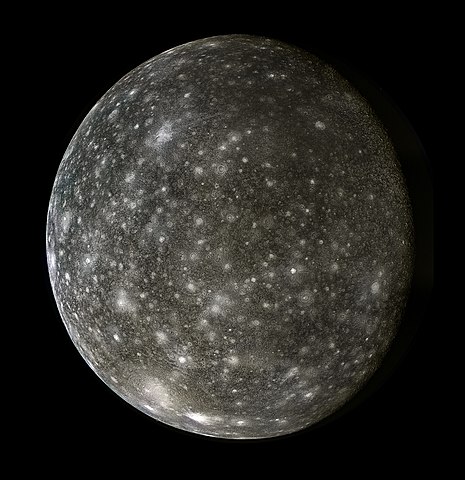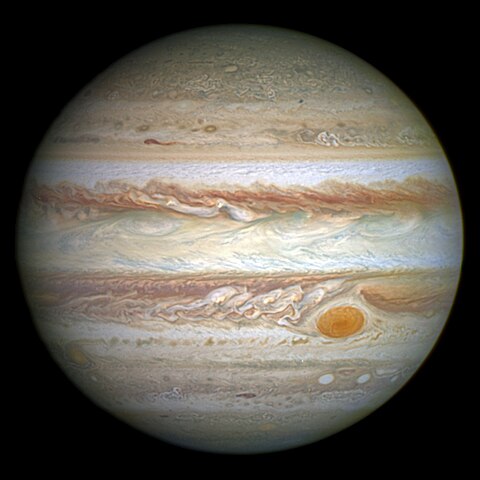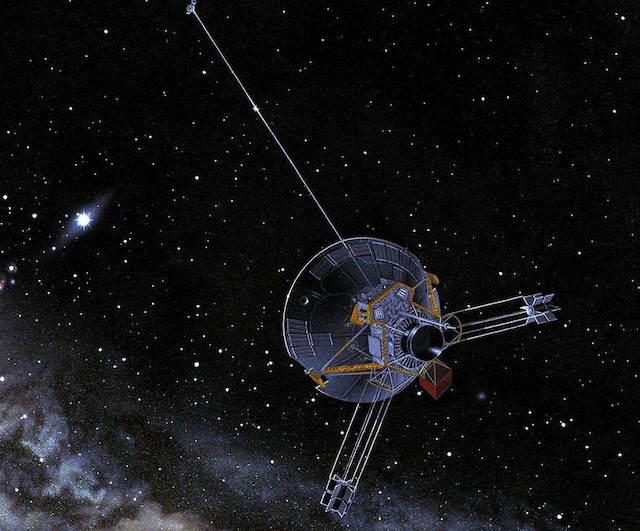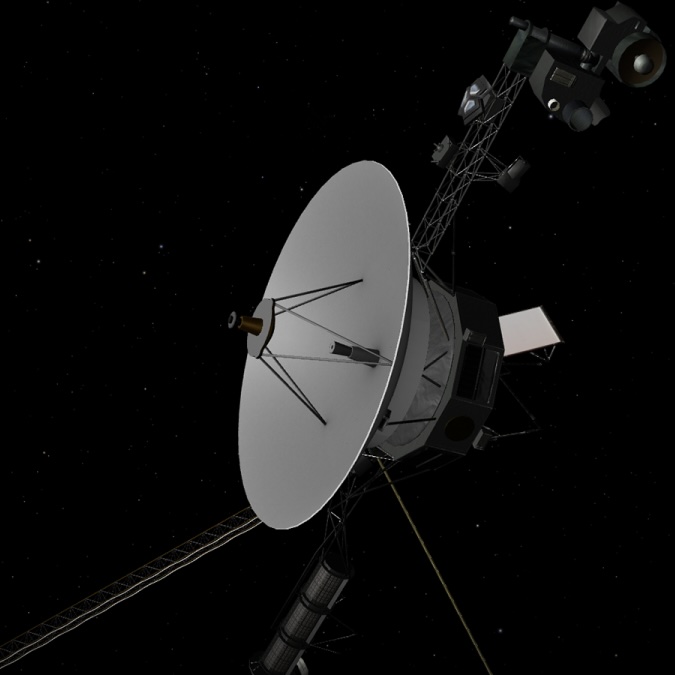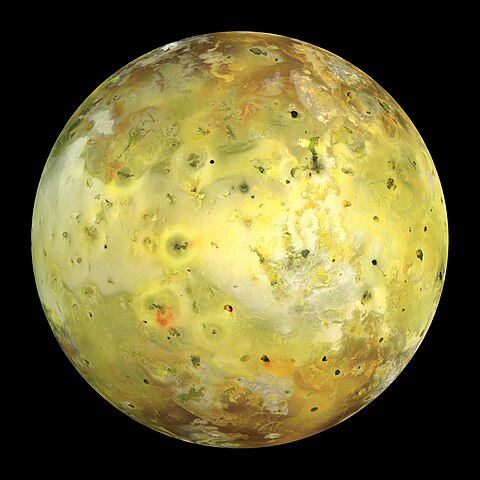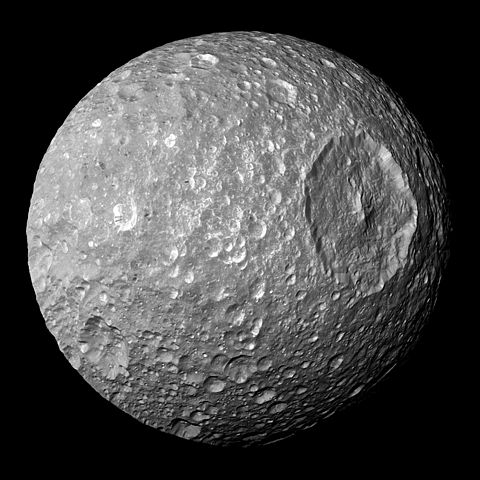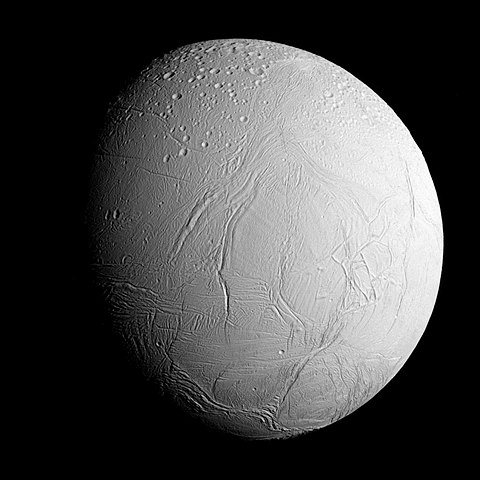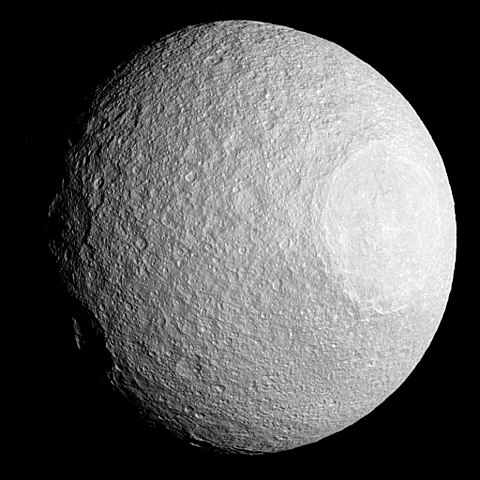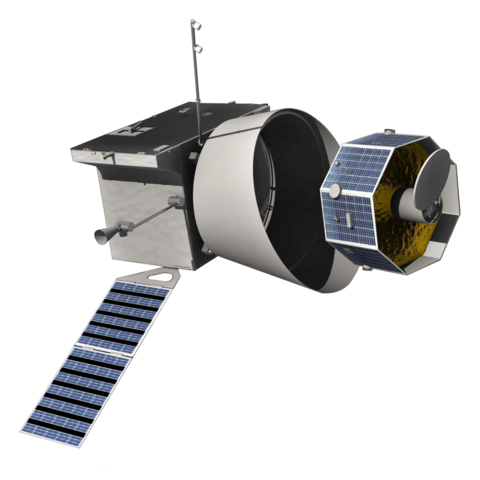1 day / second
0.5 AU
Callisto
Moon of Jupiter
The second-largest of Jupiter's Galilean moons and the third-largest moon in the Solar System, heavily cratered Callisto appears ancient and inactive with a dark, icy surface that has remained largely unchanged for billions of years.
Key Facts
learn more | Wikipedia |
mass | 1.0759e+23 kg |
radius | 2,410.3 km |
semi-major axis | 0.013 AU |
eccentricity | 0.007 |
inclination | 2.017º |
longitude of the ascending node | 0º |
argument of periapsis | 0º |
orbital period | 16.69 days |
surface gravity | 0.126 g |
discovery date | 1610 |
discovered by | Galileo Galilei, during his telescopic observations of Jupiter |
name origins | Named after the mythological nymph Callisto from Greek mythology |
rotation | Tidally locked to Jupiter |
albedo | 0.22 |
material composition | Rock and ice, with possible subsurface ocean |
density | 1.8344 g/cm³ |
Parent Planet
Jupiter
The largest planet in the Solar System, Jupiter is a gas giant with distinctive bands of swirling clouds, a powerful magnetic field, at least 95 moons, and an ongoing storm called the Great Red Spot that has raged for centuries.
Spacecraft Visits
Pioneer 10
Flyby
Launched in 1972, visited in 1973
Pioneer 10 made humanity's first close approach to Callisto on December 3, 1973, passing within 342,000 kilometers and capturing low-resolution images of the moon's heavily cratered surface.
Pioneer 11
Flyby
Launched in 1973, visited in 1974
Pioneer 11 flew within 786,000 kilometers of Callisto during its December 1974 flyby of Jupiter, capturing images and data that helped reveal the moon's heavily cratered surface.
Voyager 1
Flyby
Launched in 1977, visited in 1979
During its flyby of Callisto on March 6, 1979, Voyager 1 captured detailed images of the moon's heavily cratered surface from a distance of 124,000 kilometers, revealing it to be the most heavily cratered object in the Solar System.
Voyager 2
Flyby
Launched in 1977, visited in 1979
Voyager 2 captured over 1,000 images of Callisto during its closest approach of 240,000 kilometers on July 8, 1979, revealing the moon's heavily cratered surface in unprecedented detail.
Galileo
Flyby
Launched in 1989, visited in 1996
Galileo made its closest approach to Callisto on November 4, 1996, coming within 1,136 kilometers of the moon's surface and capturing detailed images of its heavily cratered terrain.
Jupiter Icy Moons Explorer
Flyby
Launched in 2023, planning to visit in 2032
JUICE will perform a close flyby of Callisto in 2032 during its mission to study Jupiter's largest moons, using the moon's gravity to adjust its trajectory for future encounters in the Jovian system.
